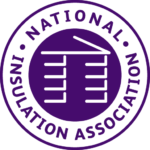
The NIA is generally supportive of the revisions to PAS 2035/2030. We believe that high quality standards are essential to safeguard consumers and promote best practice across the industry. However, we recognise that PAS is not perfect and that some revisions are necessary to ensure that PAS works best for insulation businesses on the ground. If we are to deliver high quality, whole house retrofit at scale, it is critical to strike the right balance between quality and efficiency. Therefore, the NIA welcome PAS 2035/2030 as a crucial quality standard and believe that the latest revisions will benefit industry.
While necessary, PAS compliance can be costly and time-consuming for insulation businesses; therefore, we welcome efforts to streamline the PAS process and lessen the administrative burden of compliance. Most of the revisions seek to make the PAS process more efficient, which is something we are broadly supportive of, as long as improved efficiency does not come about by diluting quality standards.
Please see a summary of the revisions below and our response to them on your behalf.
Removal of Risk Pathways
The main change is the removal of risk pathways to simplify the PAS process (as shown below), but the key roles and responsibilities throughout the process remain similar.
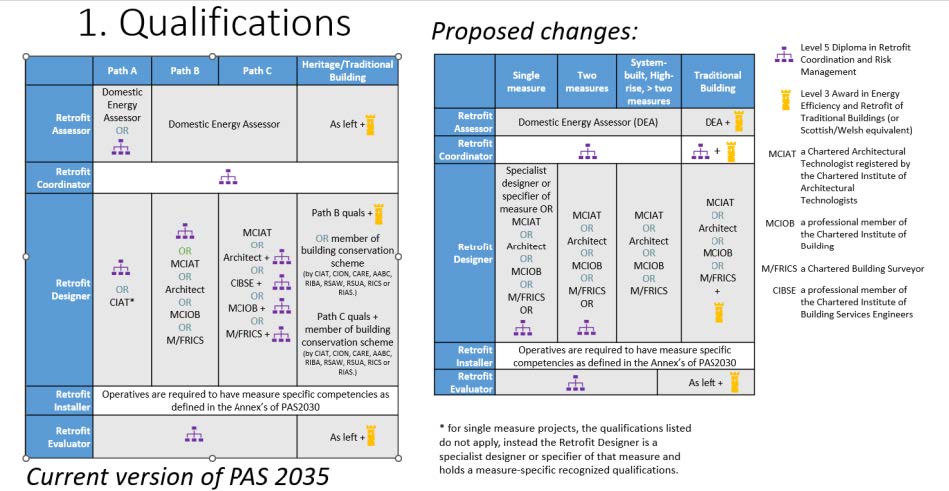
The NIA supports removing the risk pathways as it should make PAS compliance easier and remove unnecessary complexities from the process. The key implications of the removal of pathways for different stages of the process is shown below.
- Assessment: Projects would now follow the same assessment process as the previous Path B route. Thus, assessment would require a basic building assessment and more details to create an accurate RdSAP/SAP/PHPP energy model.
- Design: The design requirements across different pathways have been standardised to simplify the process. The general design requirements under PAS 2035 are now:Complete and detailed design for the measure(s) + improvement options evaluation + heritage significance assessment + ventilation assessment & upgrade (Annex C) + medium-term improvement plan + protected building design in accordance with BS 7913 + airtightness strategy for some projects
- Advice: Advice should be given at more points throughout the process, from inception through to handover. Advice requirements have also been standardised across pathways.
Other Amendments
Alongside the removal of risk pathways, there are a number of other minor amendments.
1. Contents of a Medium Term Improvement Plan are now a requirement in all retrofits rather than guidance.

The NIA is generally supportive of this change, as Medium Term Improvement Plans (MTIPs) are valuable and multi-purpose documents that set out a future strategy to improve a building towards net zero. Making MTIPs a requirement rather than guidance will strengthen the role of PAS 2035 in helping the UK to achieve net zero in the buildings sector. 80% of the UK’s housing stock by 2050 is already in existence and many of these properties will require future retrofit down the line to reach net zero.
MTIPs also provide invaluable data on the current environmental performance of a building and what changes should be considered in future to further improve the property. Therefore, they are excellent sources of building-specific data about the housing stock that can be used to inform future retrofits.
2. Removal of the Retrofit Advisor role pending improved qualifications in this area. Retrofit advice has not been removed from the PAS 2035 process and is delivered by other retrofit professionals.

Retrofit advice can easily be given by other retrofit professionals, so the NIA supports removing the Retrofit Advisor role in the interim while improved qualifications are brought forward in this area. We look forward to the timely introduction of improved qualifications.
3. Clauses have been included to facilitate scale retrofit by allowing Retrofit Design to commence based on Assessments of archetypes.

The NIA recognise the economies of scale that can be gained by allowing Retrofit Design based on assessments of archetypes. However, it is important to recognise that each building is different and requires an approach to retrofit that is tailored to its specific needs. It is important that retrofit designs are still building-specific to avoid the risk of unintended consequences that can arise from overly generic retrofit solutions. Hence, while we acknowledge that there are benefits in terms of efficiency to conducting assessments based on archetypes, it is vital that these improvements in efficiency do not at the expense of quality.
4. Requirements and guidance around moisture in buildings has been brought in line with language in BS 5250.

Management of moisture is a central concern for any retrofit project that seeks to improve the thermal performance and airtightness of a building. Therefore, the NIA supports bringing requirements and guidance with BS 5250 which controls condensation in buildings.
5. Explicit inclusion of airtightness as part of insulation retrofit in both PAS 2030 and PAS 2035. Requirements to produce an airtightness strategy for some fabric projects, which may include setting of an airtightness target and air leakage testing. However, airtightness testing is no longer normative as part of the assessment.

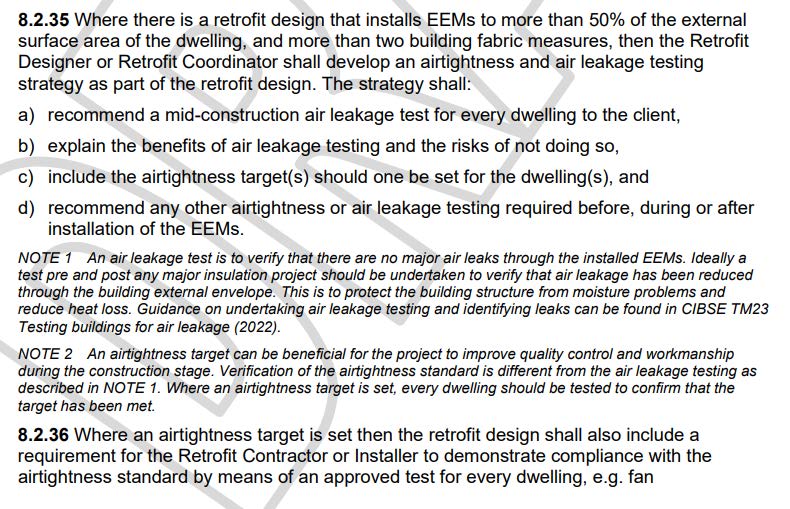

The NIA agrees with the increased consideration the revisions give to airtightness and minimising air leakage. Airtightness is a vital measure of the thermal and environmental performance of a property. When complemented with adequate ventilation and moisture control, improved airtightness can significantly improve the condition and thermal comfort of a building.
6. Clarification of what happens in the PAS 2035 process if historic significance is identified. A new Annex E is included, which contains detailed information about how to assess the significance of a building.

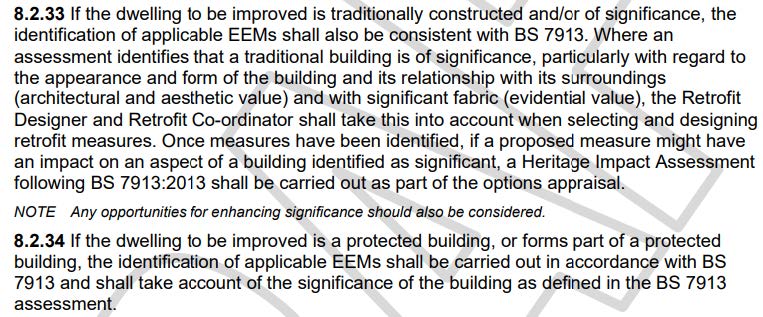
Protected buildings and those with historic significance can pose lots of problems when it comes to retrofit. Therefore, the NIA welcome more clarity and detail on how to assess significance and what happens if historic significance is identified. The inclusion of Annex E also contains useful additional detail about assessing significance. Historically significant buildings can be very complex to retrofit and often miss out on energy efficiency upgrades as a result. However, retrofitting them will be necessary as we move towards net zero and is also important to improve the thermal comfort of the residents living within them. As such, more clarity within PAS on how to effectively assess and retrofit significant buildings is much-needed.
7. Clarification of the role of the Retrofit Coordinator, including site visits and recording of non-compliance. There is now a requirement that the Retrofit Coordinator carries out site inspections during the project which should include a minimum of one visit.
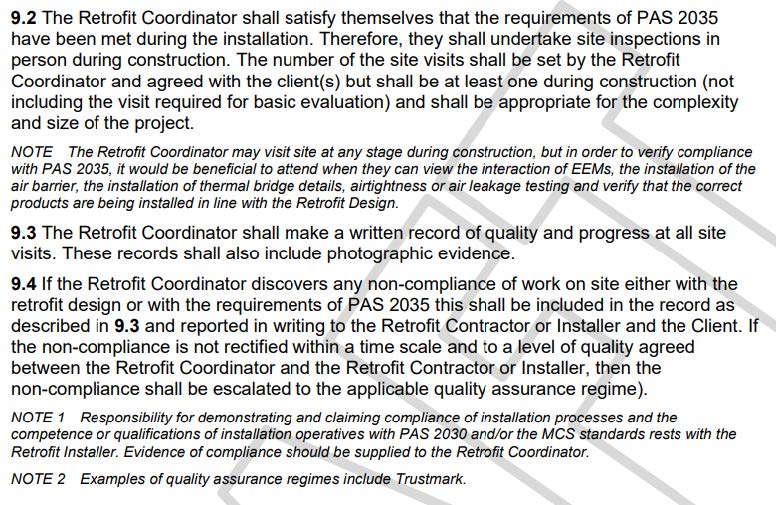
The Retrofit Coordinator is an extremely important role within the PAS 2035 framework, so it is good to see more clarification on the requirements and expectations for the role. We support the introduction of a minimum of one site inspection during a project to ensure high quality retrofit and compliance with PAS.
8. Further Monitoring and Evaluation references the new BS 40101 Building Performance Evaluation, and Monitoring and Evaluation is now considered from inception through to completion.

The NIA support the move to consider monitoring and evaluation throughout the project cycle. Adequate evaluation is important to ensure that a retrofit project delivers on its intended outcomes and the building performs as designed once the project is completed. More monitoring throughout the process may enable potential issues to be identified earlier in the project. The reference to BS 40101 brings PAS 2035 into line with the latest improvements in building monitoring and evaluation, which we see as a positive step.
Query for Commenters
The BSI also asked respondents to provide their views on the following question:
What is an appropriate transition period for the adoption of the new PAS 2035:2023 and PAS 2030:2023 standards, allowing sufficient time for businesses and other industry bodies to comply with the updated requirements? Please submit your views as a general comment.
Many PAS-accredited businesses are already delivering long-term retrofit programmes, such as ECO4, SHDF 2, HUG 2, which are due to run until 2025 or 2026. These projects have been procured, designed and delivered to current PAS 2035:2019 standards. Changing mid-programme to new standards may not be feasible or practical, and may add unnecessary complexity to projects. Therefore, the NIA believe that a reasonable transition period is necessary to allow industry, who are already delivering ongoing long-term projects, time to adapt to new delivery standards.
Another issue is that there will be limited capacity within accreditation bodies to facilitate industry-wide updates to certification within a limited timeframe. The current relevant certification for installers is 2030:2019, which would need updating in line with any new standards. Delays in certification updates caused by a lack of capacity within accreditation bodies could leave many installers unable to provide PAS 2030:2023 certification initially and prove their compliance to new standards. This could be very damaging for individual businesses who might miss out, and the industry as a whole.
